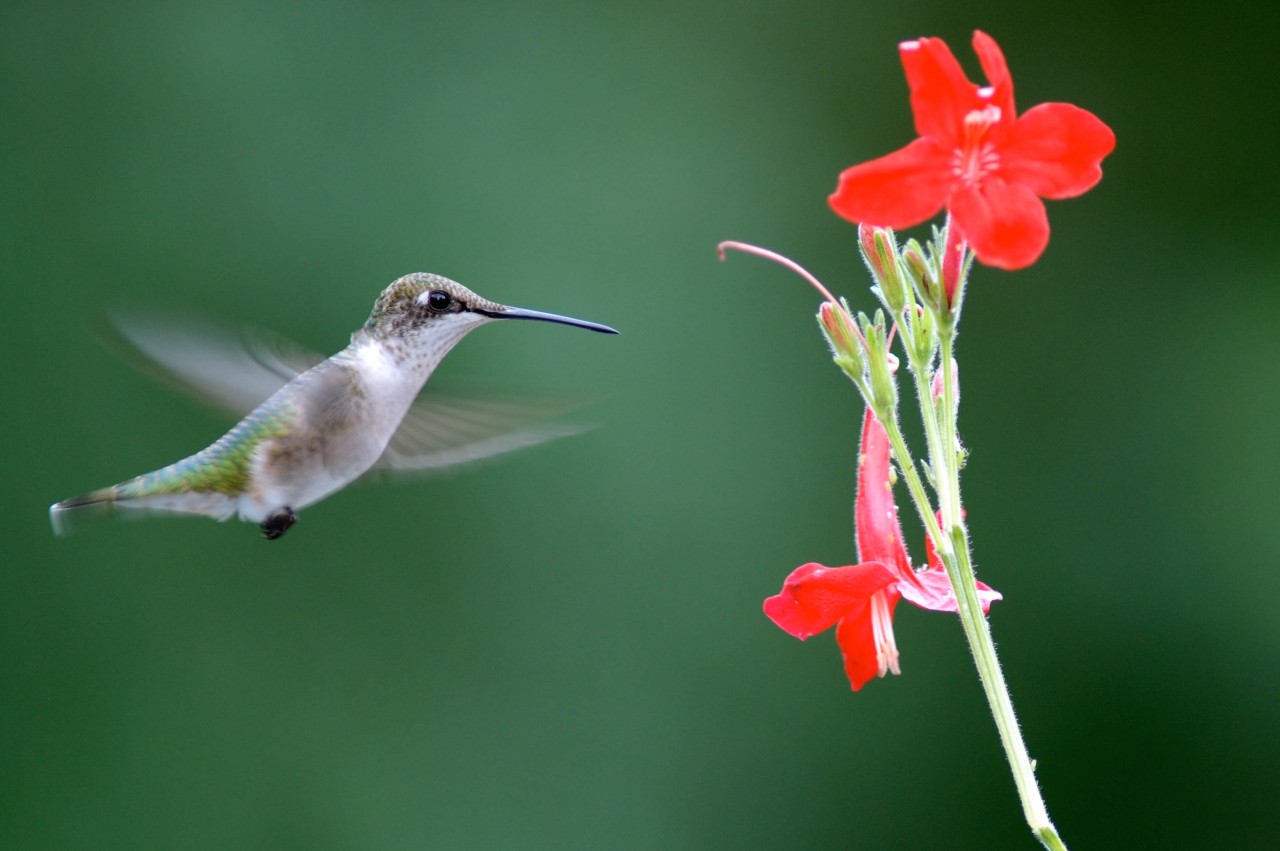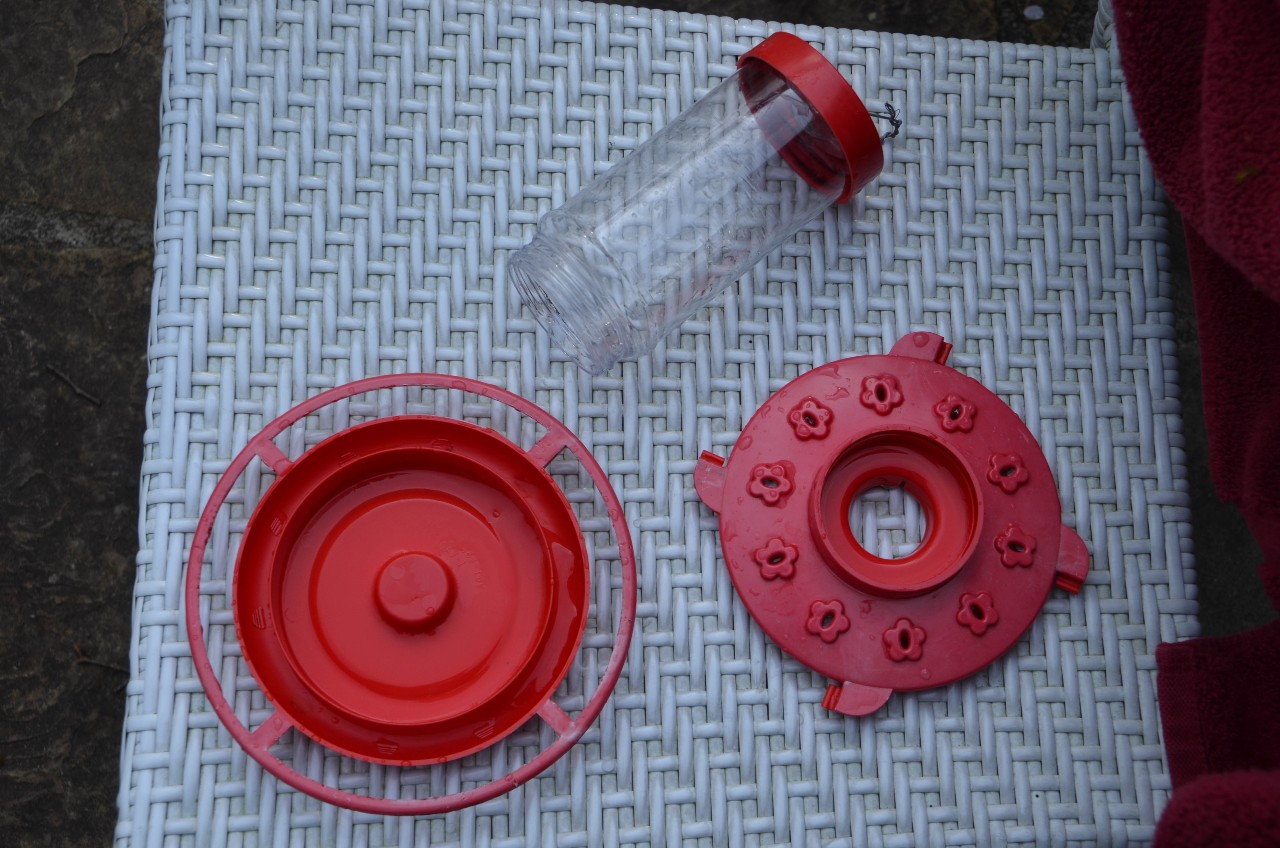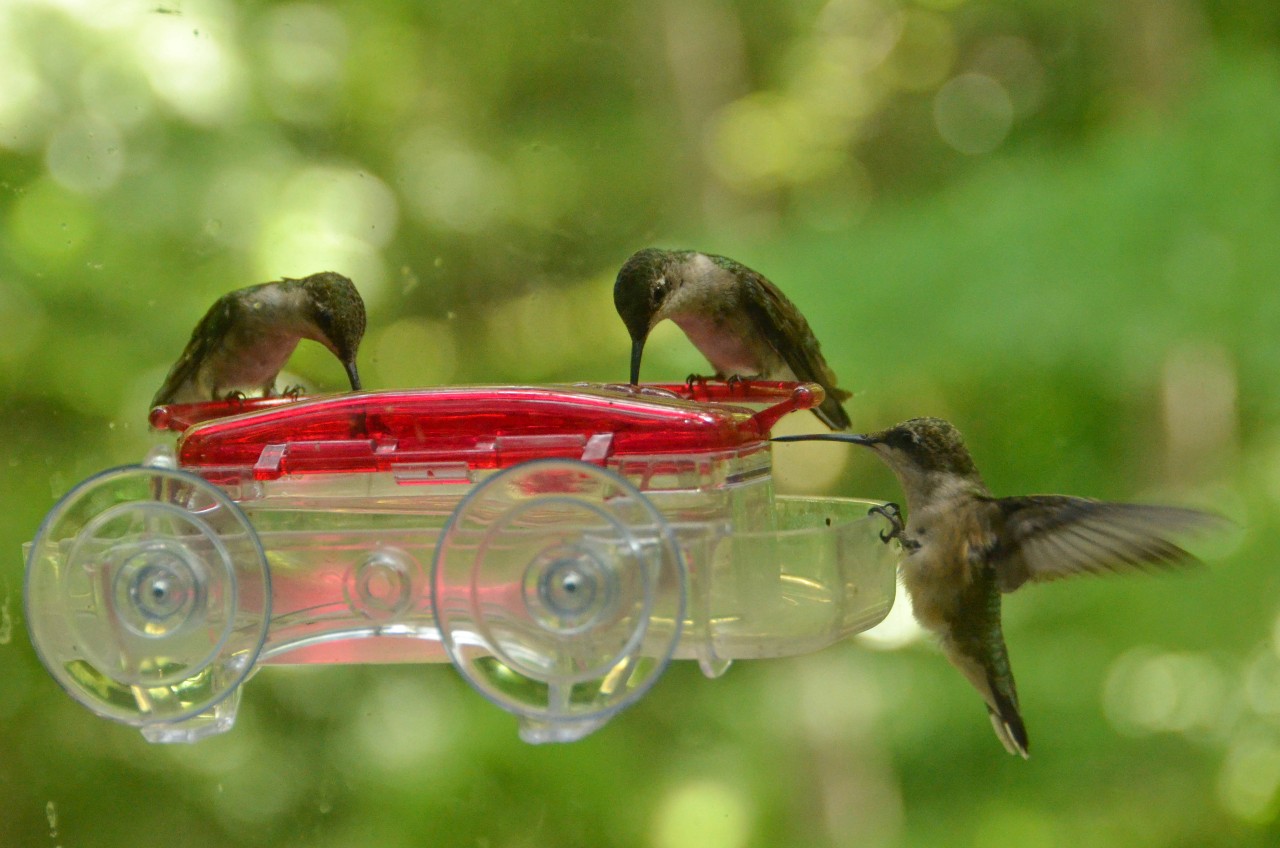Be a Hummingbird Hero: 12 Ways to Make a Positive Difference

By naturalist and photographer Sharon Mammoser from Nature for My Soul
Our beloved ruby-throated hummingbirds have returned from their wintering grounds in Southern Mexico and Central America, ready to establish territories, find mates, reproduce and raise babies. So many of us love seeing these tiny birds in our yards and want to do all it takes to attract them and keep them around for the summer. However, if you’re not careful, you can wind up doing more harm than good! If you don’t want to put a lot of time and attention into your feeders, just focus on growing pollinator-safe native plants for a low-maintenance way to attract these beautiful birds.
Here are 12 ways to make sure you’re helping the birds you love, and not hurting them:
1. If you love hummingbirds and want to offer feeders, you MUST be willing to clean the feeders regularly.
In hot weather black mold builds up quickly and studies have shown that the birds can die from mold. It causes their tongues to swell up and then the bird can starve to death. Females can even pass this along to their chicks, causing them to die too. The solution is easy: Clean your feeders regularly. The more often you clean your feeders, the easier this job will be. Bring your feeders in, rinse with hot water and refill. During the hottest part of the summer if mold starts to form, use a sponge or an old toothbrush to scrub the feeders. You can soak the feeders in vinegar mixed in water for a while, then rinse, and refill. Or, use a little bleach in a gallon of water for really stubborn mold. Let the feeders soak for a while, then RINSE WELL, dry and refill.

2. Don’t “top off” the feeders.
When you add fresh, new nectar to a feeder that has been outside, all of the bacteria, mold and other particles in the feeder will continue to be there. Instead, bring the feeders inside, thoroughly rinse or clean them, and then refill. Skipping this step can endanger the birds.
3. Choose the right feeders.
The best kind of hummingbird feeders are those that come apart easily for regular cleaning. If the feeder has a narrow neck, base or any parts that are unreachable, give this feeder a pass. Also give a pass also to huge feeders. Nectar is likely to spoil if you fill those large feeders all the way to the top. To lessen the chance that your feeder attracts bees, avoid any feeders with the color yellow. Yellow is not needed. Built-in ant moats are great, but if the feeder doesn’t have them, these can easily be added. Suction cup feeders that can be put on your windows are great for watching the birds up close. Kids—and adults, will love being able to look so closely at these amazing birds!
4. Offer more than one feeder.
You’ve probably watched hummingbirds and noticed how the male chases other birds away from the feeder. You can attract more birds to your yard by offering more feeders. If possible, place them out of sight from each other so one male cannot see, and guard, all of the feeders at the same time.
5. If you love hummingbirds, please don’t buy red nectar!
These mixes usually contain red dye which might be bad for the birds. Nectar in flowers is not red and the dye is 100% unnecessary.

6. Make your own nectar from water and granulated sugar.
It’s easy to mix up your own nectar–one cup of plain, white, granulated sugar to four cups water. Use hot tap water and then mix. Audubon says, “It’s not necessary to boil the water, but keep any extra nectar refrigerated.” A dedicated jar or pitcher in the fridge makes it easy to always have fresh nectar on hand. This will last for up to two weeks.
7. Do not use raw sugar, or turbinado sugar.
This may sound healthier, but it definitely isn’t. Raw sugar contains high amounts of iron. This iron is stored in the liver of the tiny birds and in time can cause death. You likely won’t notice this, as plenty of other birds will continue to come to the feeders.
8. Don’t fill the entire feeder, especially on very hot days.
Nectar in summer can ferment quickly. You can slow this down by hanging your feeders in the shade. During the hottest part of the summer it will be necessary to refill and clean your feeders regularly, likely every other day or every three days. It is not practical to fill those giant 12, 16, or 32 ounce feeders with nectar and expect it to last. Instead, only put a small amount of nectar in the feeders and then replace it regularly as needed.
9. If you love hummingbirds, avoid using pesticides in your yard.
Did you know hummingbirds feed on both nectar and insects, and that insects make up about half of the bird’s diet?
10. Offer native flowers in addition to the hummingbird feeders.
There are many, many flowers that hummingbirds love, and having these in addition to the feeders, will appeal to hummingbirds. Here are a few:
- Trumpet creeper (campsis radicans)
- Crossvine (Bignonia capreolata)
- Red columbine (Aquilegia canadensis)
- Phlox (Phlox paniculata)
- Salvia (Salvia spp.) Any!
- Cardinal flower (Lobelia cardinalis)
- Fire pinks (Silene virginica)
- Indian pinks (Spigelia marilandica)
- Coral honeysuckle (Lonicera sempervirens)
- Red bee balm (Monarda didyma)
- Red buckeye (Aesculus pavia)
- Bleeding Heart (Lamprocapnos spectabilis)
- Spotted jewelweed (Impatiens capensis)

11. Buy flowers for your yard and garden from reputable sources that don’t treat with Neonicotinoids/ “Neonics.”
Did you know these chemicals that harm bees and other native pollinators? Or that they can spread in the soil and contaminate other nearby plants?According to the Natural Resource Defense Council, (NRDC) “The way they work is by permanently binding to the nerve cells of insects, overstimulating and destroying them. Exposed insects often exhibit uncontrollable shaking and twitching followed by paralysis before eventually dying. Even at nonlethal doses, neonics can weaken critical functions, such as an insect’s immune system, navigation, stamina, memory, and fertility.” Neonics are considered systemic pesticides. NRDC says, “That makes the plant itself—including its nectar, pollen, leaves, stems, and fruit—toxic.” Avoid stores where you cannot inquire about how the plants have been treated. Instead, shop at your local nursery. See a list of places to find native plants in WNC and Upstate SC. Once there, ask if the plants have been treated with neonics and if they have, give them a pass.
12. Offer a shallow water source that is located in a sheltered place away from potential predators like cats or snakes.
Some nurseries offer misting fountains or other small, solar-powered sprinkler heads that can be put in bird baths. Hummingbirds don’t need to drink water since their nectar contains water, but they will use water to bathe in. Put rocks in deep bird baths or offer a shallow water source with a gurgling fountain.
Hummingbirds bring us joy when we watch them and most of us love seeing them. But the bottom line is, if we want to attract these birds to our yards, we must be willing to be responsible stewards, confident our efforts are not harming the very birds we love.
Happy hummingbird watching!